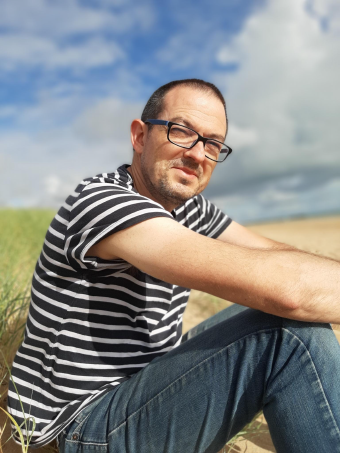
Yannick DE OLIVEIRA
Développement logiciel, Bases de données, Gestion des données
INRAE, Ingénieur d'Études
yannick.de-oliveira@inrae.fr — 01 69 33 23 76
Atelier de Bioinformatique et Informatique
Bioinformatique, Science Ouverte et Systèmes
- Génétique Quantitative et Évolution - Le Moulon
- Université Paris-Saclay, INRAE, CNRS, AgroParisTech
- IDEEV
- 12 route 128
- 91190 Gif-sur-Yvette
Expériences
- Ingénieur en Bioinformatique (2009-…), INRAE
- Résponsable des développements, support client solutions LIMS (2007-2009), Sibio
- Ingénieur en Bioinformatique (2004-2007), INRA, FLAGdb++ et UTILLdb, INRA
- DESS « Etude de Génomes Outils Informatiques et Statistiques » (2004), Rouen.
Activités
Développement logiciel
Membre de l’équipe ABI (ABI-Soft) mes activités sont centrées sur le développement d’outils de gestion des données et de logiciels dédiés à la génétique ainsi que leur mise à disposition auprès de nos communautés d’utilisateurs. Mon rôle est d’assurer le lien entre les équipes de recherche de l’UMR et les développeurs d’ABI-Soft ainsi que définir la stratégie de développement de l’équipe.
L’équipe ABI-Soft développe notamment trois outils de gestion des données : Thaliadb, SHiNeMaS et DiverCILand. Tous ces outils sont développés à l’aide de technologies dans lesquelles l’équipe a aujourd’hui une bonne expertise : Python / Django & Django REST, PostgreSQL. Côté logiciels, BioMercator et OptiMAS sont maintenu par l’équipe sur des technologies Java & R-Shiny..
Référent donnéess
En tant que Référent Données Operationnel (RDO) pour l’unité, je suis amené à accompagner les équipes de l’UMR dans la rédaction de leur Plan de gestion des Données (PGD) et/ou dans leurs démarches relative au Réglement Général pour la Protéction des Données (RGPD). C’est le cas notamment pour le projet ANR Protéger et Cultiver Autrement MoBiDiv . Je veille également à fournir les meilleurs outils possibles aux collègues de l’UMR afin de les accompagner dans le processus de production de données FAIR (Findable, Accessible, Interoperable, Reusable).
CATI PlantBreed
En tant que co-animateur du CATI PlantBreed (avec Jacques Lagnel, UR GAFL) je participe anuellement à l’organisation du hackathon inter-CATIomique en collaboration avec les animateurs de 4 autres CATI : BARIC , BIOS4Biol , BOOM , GREP .
Publications
- Sampaio AM., Tralamazza SM., Mohamadi F., De Oliveira Y. , Enjalbert J., Saintenac C., Croll D., Thomma, BPHJ.. (2025) Diversification, loss, and virulence gains of the major effector AvrStb6 during continental spread of the wheat pathogen Zymoseptoria tritici. PLoS Pathog, 3 (21) e1012983
- De Oliveira Y. , Burlot L., Dawson JC., Goldringer I., Madi D., Rivière P., Steinbach D., van Frank G., Thomas M.. (2020) SHiNeMaS: a web tool dedicated to seed lots history, phenotyping and cultural practices. Plant Methods, 1 (16) 98
- Lopez Arias DC., Chastellier A., Thouroude T., Bradeen J., Van Eck L., De Oliveira Y. , Paillard S., Foucher F., Hibrand-Saint Oyant L., Soufflet-Freslon V.. (2020) Characterization of black spot resistance in diploid roses with QTL detection, meta-analysis and candidate-gene identification. Theor Appl Genet,
- Dalmais M., Schmidt J., Le Signor C., Moussy F., Burstin J., Savois V., Aubert G., Brunaud V., De Oliveira Y. , Guichard C., Thompson R., Bendahmane A.. (2008) UTILLdb, a Pisum sativum in silico forward and reverse genetics tool. Genome Biol, 2 (9) R43